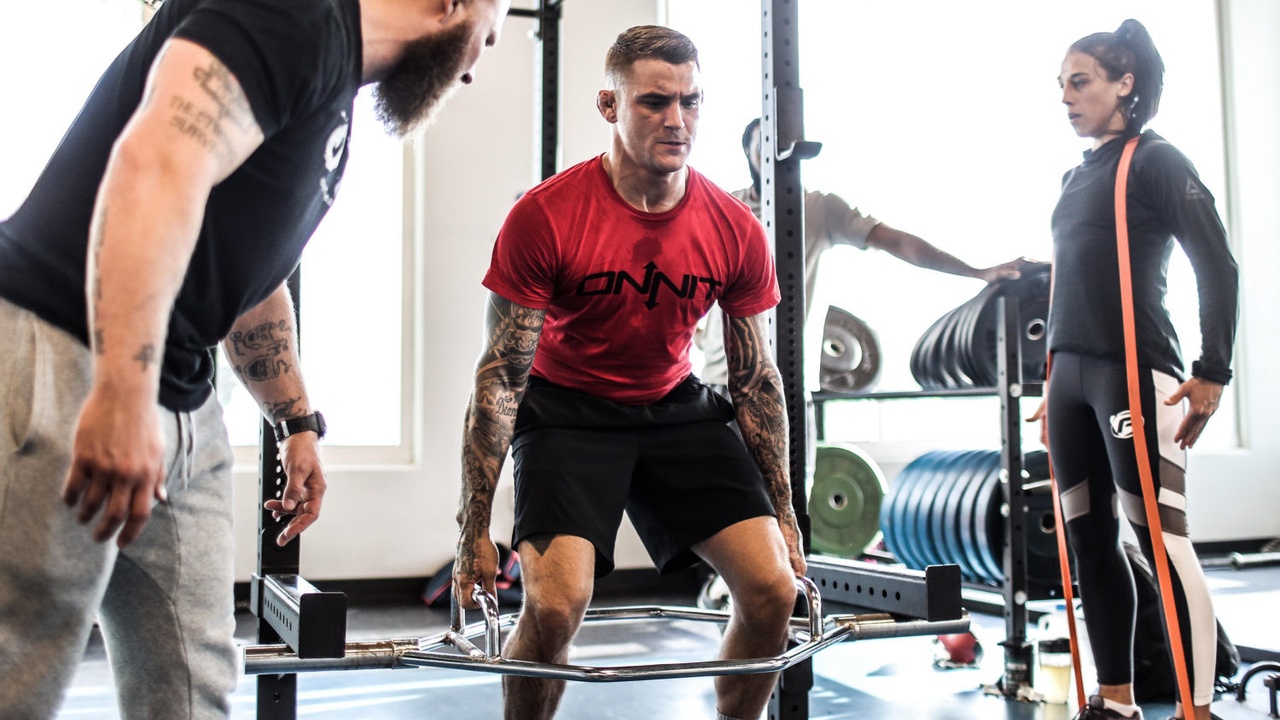
Specific Workouts for MMA: Understanding the Demands of Various Disciplines and What We Can Do to Improve Performance
By Phil Daru
In the sport of mixed martial arts we have multiple training backgrounds from BJJ, Karate, Judo, Kickboxing, Boxing, Muay Thai, Wrestling, Sambo,Taekwondo, the list goes on and on. With each individual art comes a specific energy and strength demand. In order to fully optimize performance from a physical preparation standpoint we must identify and execute these systems correctly.
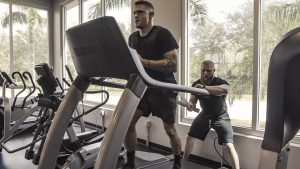 The mixed methods approach:
The mixed methods approach:
With the rise of the sport plenty of young kids are now training in strictly MMA. This leads to a much more competitive situation for all athletes trying to make it to the top of the game. Back in the early days MMA was a collection of arts. Each person would specialize in one art then fight against specialists in other arts to find out who was the better artist. Times have changed and most if not all kids are well versed in all or mixed arts. The importance of stimulating the performance demands become a vital part of preparation.
Categories of arts and the demands:
Striking: Boxing, Kickboxing, Muay Thai, Karate, Taekwondo
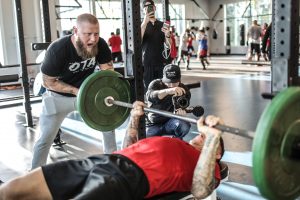 When it comes to standup or striking demands you must have a high aerobic and anaerobic / a-lactic threshold. What does this mean? Well in a standup situation you must have the ability to strike and strike often where movement and fluidity are key. In order to maintain an even pace without “gassing out” you must have prerequisites. These include a high aerobic base, high Vo2 Max (maximal oxygen uptake) and Lactate threshold (ability to buffer Lactate efficiently) in order to accomplish these tasks. You also want to be able to strike hard and fast periodically throughout a 5 minute round. Anaerobic / A-lactic energy is responsible for those short bursts of output throughout the fight. This is important for ending fights with a devastating knockout. A striker also has to be powerful having the ability to create sub-maximal force in high velocities. In order to do that we must train the qualities efficiently and in the right sequence to gain an optimal stimulus adaptive response.
When it comes to standup or striking demands you must have a high aerobic and anaerobic / a-lactic threshold. What does this mean? Well in a standup situation you must have the ability to strike and strike often where movement and fluidity are key. In order to maintain an even pace without “gassing out” you must have prerequisites. These include a high aerobic base, high Vo2 Max (maximal oxygen uptake) and Lactate threshold (ability to buffer Lactate efficiently) in order to accomplish these tasks. You also want to be able to strike hard and fast periodically throughout a 5 minute round. Anaerobic / A-lactic energy is responsible for those short bursts of output throughout the fight. This is important for ending fights with a devastating knockout. A striker also has to be powerful having the ability to create sub-maximal force in high velocities. In order to do that we must train the qualities efficiently and in the right sequence to gain an optimal stimulus adaptive response.
Grappling: Wrestling, Judo, Sambo, BJJ
Grappling demands the ability to be strong in close quarters and have the ability to repeat bouts of high intensity. All while having a base of anaerobic and lactic conditioning. When it comes to grappling most of the time you will be working on positions and working to either get a takedown, improve position and go for submission or control for ground and pound. In order to optimize efficiency, technique and strength will be crucial. Working on isometrics, dynamic isometrics, mobility, interval training, and repeated sprint ability training will be important in your program.
Concurrent Approach:
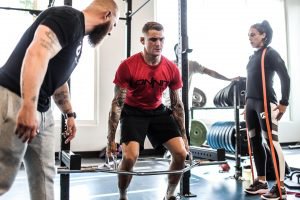 In a fight camp, usually consisting of about 8 weeks long, we have very limited time to induce adaptations for all systems. In many cases you will have very limited time to actually train these systems as well. So structuring a plan that maximizes time use and overall balance of training is crucial. If you are a fighter that likes to stand and strike then we must focus on those energy systems and strength demands that will be parallel to the goals of the fighter in that particular fight. This does not mean that we totally negate other demands of the sport. We still must train it with emphasis on general specific means but this isn’t the main priority inside camp. In camp, sport specificity is key. That does not mean to throw ankle weights on your legs and go kick the bag for 5x5 minute rounds. What this simply means is to employ exercises and train energy systems that directly correlate to the individuals game plan and skill. Choose exercises with high transferability, energy systems and strength modalities leading to success in the cage. It’s important to note that when your working on physical preparation the focus needs to be on 3 major key points: specificity, overload, and adaptation. With that being said, proper recovery, auto-regulation and structured de-loads are highly important as well.
In a fight camp, usually consisting of about 8 weeks long, we have very limited time to induce adaptations for all systems. In many cases you will have very limited time to actually train these systems as well. So structuring a plan that maximizes time use and overall balance of training is crucial. If you are a fighter that likes to stand and strike then we must focus on those energy systems and strength demands that will be parallel to the goals of the fighter in that particular fight. This does not mean that we totally negate other demands of the sport. We still must train it with emphasis on general specific means but this isn’t the main priority inside camp. In camp, sport specificity is key. That does not mean to throw ankle weights on your legs and go kick the bag for 5x5 minute rounds. What this simply means is to employ exercises and train energy systems that directly correlate to the individuals game plan and skill. Choose exercises with high transferability, energy systems and strength modalities leading to success in the cage. It’s important to note that when your working on physical preparation the focus needs to be on 3 major key points: specificity, overload, and adaptation. With that being said, proper recovery, auto-regulation and structured de-loads are highly important as well.
Training with a purpose:
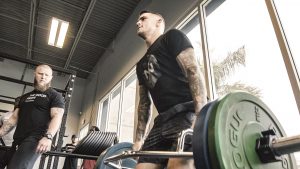 So now that we’ve broken down the arts, figured out what demands are needed to enhance performance, we now have to assess, evaluate, plan, formulate, and attack.
So now that we’ve broken down the arts, figured out what demands are needed to enhance performance, we now have to assess, evaluate, plan, formulate, and attack.
For me strength is always going to be in high regards when it comes to overall performance demands. If you want to be fast then get strong. If you want explosive power then get strong. If you want to have better overall conditioning then get strong. Finally if you want to have outstanding mobility, yeah you guessed it, you better get STRONG. For me strength comes in many forms but for this particular article I’ll stick to this: the ability to create high amounts of force with large amounts of intensity.
After that you must have a great aerobic capacity with a high Vo2 relative to your Max HR and Lactate threshold. This is key to dictating pace in a fight. If you have the ability to stay consistently active throughout the fight you will have the capability to outwork your opponent.
 Next would be having explosive power. In order to increase power we must increase strength. In order to produce power throughout the entire fight we must have good “Cardio”. Whether you knock them out in the first or fifth you must be prepared to do both. In order to have the ability to repeat bouts of energy we must have high anaerobic capacity or repeated sprint ability (RSA). This will allow power to be displayed and give you the opportunity to execute takedowns throughout the fight.
Next would be having explosive power. In order to increase power we must increase strength. In order to produce power throughout the entire fight we must have good “Cardio”. Whether you knock them out in the first or fifth you must be prepared to do both. In order to have the ability to repeat bouts of energy we must have high anaerobic capacity or repeated sprint ability (RSA). This will allow power to be displayed and give you the opportunity to execute takedowns throughout the fight.
Mobility for all types of arts is going to be a baseline or a prerequisite to enhance the physical demands and bio-motor patterns of the athlete. Without having proper control or active range of motion in the connective tissue and muscle, you are not going to be able to maximize performance. Focusing on true mobility training at least once a week will help with recovery. Mobility training also increases athleticism in the fighter to create a well balanced machine.
So let me leave you with this: a plan of action must have a true goal in mind. You must understand the situation, and prioritize the right balance of training for the fighter to reach a peak for their specific game. Out of camp, or further away from the fight, work on basic general physical preparedness, increased overall work capacity and flexibility/mobility training. Higher frequency and volume will be important in the out-of-camp program. In-camp is all about working on your game, skills training, technical and tactical training with physical training that matches the goals of the fight.
I hope you like this article. For more details on how to properly formulate a program checkout my articles on FightCampConditioning.com or check out my seminar speaking schedule!




